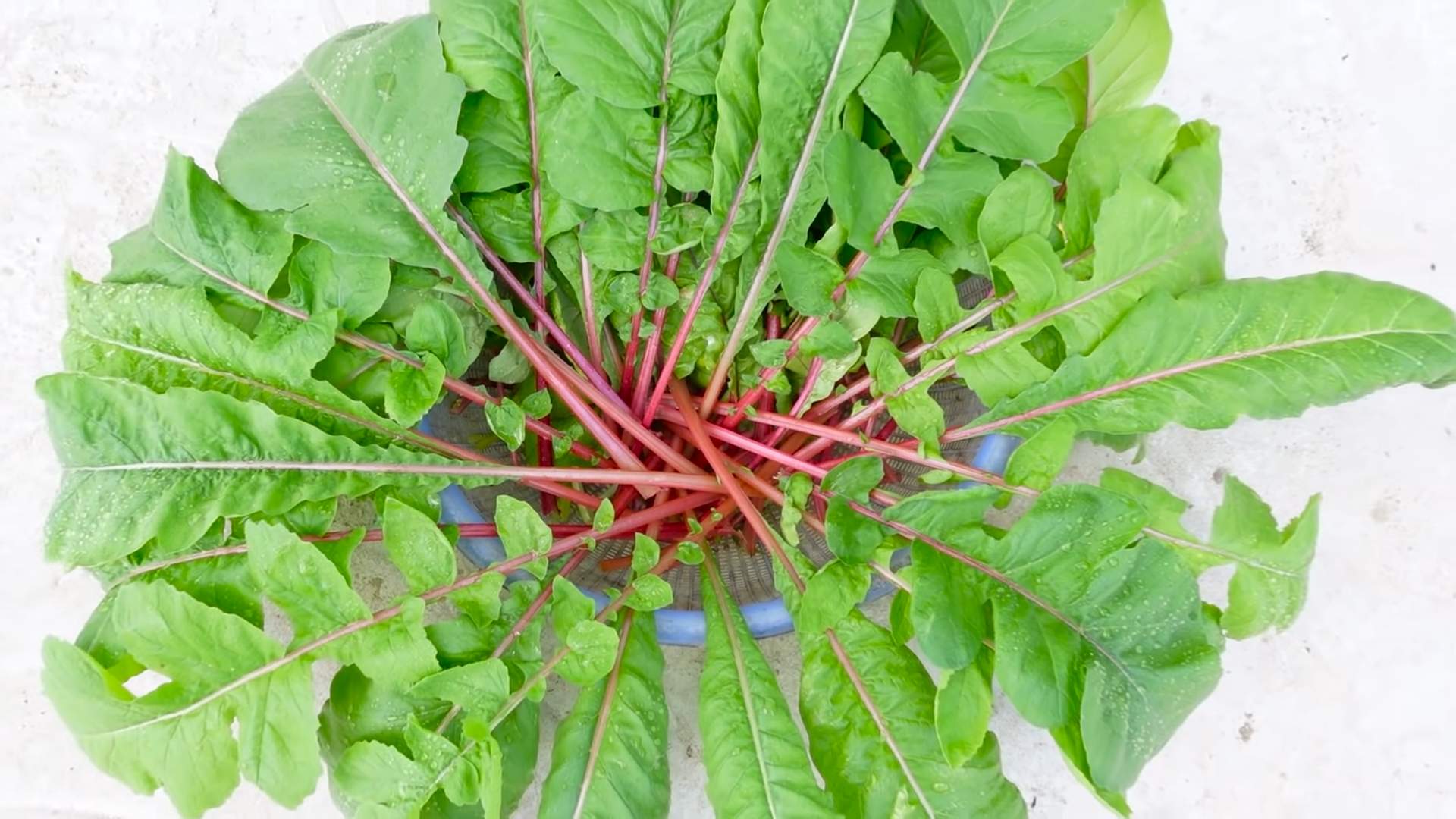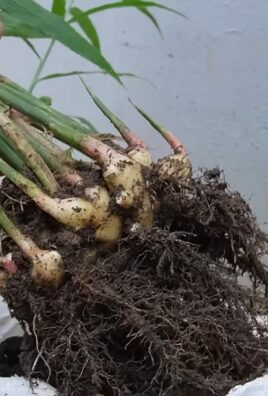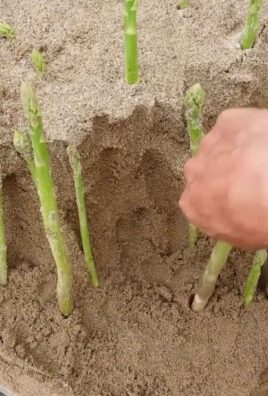Grow vegetables for family, and unlock a world of fresh flavors and rewarding experiences right in your backyard! Have you ever dreamt of serving a salad bursting with vibrant, homegrown tomatoes or a stir-fry featuring crisp, just-picked peppers? This isn’t just a dream; it’s an achievable reality with a few clever home gardening tricks and DIY solutions. For centuries, cultivating our own food has been a cornerstone of human civilization, connecting us to the earth and providing sustenance. From ancient Roman kitchen gardens to the victory gardens of wartime, growing your own food has always been a symbol of self-sufficiency and resilience.
In today’s fast-paced world, knowing how to grow vegetables for family is more important than ever. Not only does it offer a healthier alternative to store-bought produce, often laden with pesticides and shipped from afar, but it also provides a therapeutic escape from the stresses of daily life. Imagine the satisfaction of nurturing a tiny seed into a bountiful harvest, knowing exactly where your food comes from and how it was grown. Plus, let’s be honest, fresh, homegrown vegetables simply taste better! This article is packed with easy-to-follow DIY projects and clever gardening hacks that will empower you to create a thriving vegetable garden, no matter your space or experience level. Get ready to roll up your sleeves and discover the joy of growing your own delicious, healthy food!

Creating Your Own Family Vegetable Garden: A Beginner’s Guide
Hey there, fellow garden enthusiasts! I’m so excited you’re thinking about growing your own vegetables. There’s nothing quite like the taste of a homegrown tomato or the satisfaction of feeding your family with food you nurtured yourself. It might seem daunting at first, but trust me, with a little planning and effort, you can create a thriving vegetable garden that will bring joy and deliciousness to your table. Let’s dive in!
Planning Your Garden: Location, Size, and What to Grow
Before you even think about digging, a little planning goes a long way. This is where you decide what you want to grow, where you’ll grow it, and how much space you’ll need.
* **Sunlight is Key:** Most vegetables need at least 6-8 hours of direct sunlight per day. Observe your yard throughout the day to see where the sun shines the longest. South-facing areas are usually the sunniest.
* **Consider Your Space:** Don’t get overambitious! Start small. A 4×4 foot raised bed or a few containers can be a great starting point. You can always expand later. Think about the mature size of the plants you want to grow. A single tomato plant can take up a lot of space!
* **Soil Matters:** Healthy soil is the foundation of a healthy garden. If your soil is compacted or poor, consider amending it with compost or building raised beds with fresh garden soil.
* **Water Access:** Make sure your garden is easily accessible to a water source. Lugging watering cans across the yard gets old fast!
* **What Does Your Family Eat?** This is the fun part! Choose vegetables that your family enjoys eating. There’s no point in growing something that will just go to waste. Consider things like tomatoes, lettuce, peppers, cucumbers, zucchini, and herbs.
* **Consider Your Climate:** Different vegetables thrive in different climates. Check your local planting calendar to see what grows well in your area and when to plant it.
* **Succession Planting:** To maximize your harvest, consider succession planting. This means planting new crops every few weeks to ensure a continuous supply of fresh vegetables throughout the growing season.
Preparing the Garden Bed: From Sod to Soil
Okay, you’ve got your plan. Now it’s time to get your hands dirty! Preparing the garden bed is crucial for creating a healthy environment for your plants.
1. **Remove the Sod (If Necessary):** If you’re starting a garden in a grassy area, you’ll need to remove the sod. You can do this by using a sod cutter or by hand with a shovel. Dig under the sod, lifting it up in sections. You can compost the sod or use it to fill in low spots in your yard.
2. **Till the Soil (Optional):** Tilling can help break up compacted soil and incorporate amendments. However, it’s not always necessary, and excessive tilling can damage soil structure. If your soil is relatively loose, you may be able to skip this step. If you do till, be careful not to till too deeply, as this can bring up subsoil that is low in nutrients.
3. **Amend the Soil:** This is where you add organic matter to improve the soil’s fertility, drainage, and water retention. Compost is your best friend here! Add a generous layer of compost to the soil and mix it in thoroughly. You can also add other amendments like aged manure, peat moss, or leaf mold.
4. **Level the Bed:** Use a rake to level the surface of the garden bed. This will help ensure that water drains evenly and that your plants have a consistent growing environment.
5. **Consider Raised Beds:** If your soil is particularly poor or you have drainage issues, consider building raised beds. Raised beds offer several advantages, including better drainage, warmer soil, and easier weed control. You can build raised beds from wood, concrete blocks, or other materials.
Planting Your Vegetables: Seeds vs. Seedlings
Now for the exciting part – planting! You have two main options: starting from seeds or buying seedlings (also called transplants).
* **Starting from Seeds:** Starting from seeds is more economical and gives you a wider variety of options. However, it requires more time and effort. You’ll need to start seeds indoors several weeks before the last frost date in your area.
* **Buying Seedlings:** Buying seedlings is more convenient and faster. You can find a wide variety of seedlings at your local garden center. However, it can be more expensive than starting from seeds.
1. **Check Your Last Frost Date:** This is crucial! Planting too early can result in frost damage. You can find your last frost date online or by contacting your local extension office.
2. **Follow Planting Instructions:** Whether you’re planting seeds or seedlings, be sure to follow the instructions on the seed packet or plant tag. This will tell you how deep to plant the seeds or seedlings and how far apart to space them.
3. **Water Thoroughly:** After planting, water the seeds or seedlings thoroughly. This will help them establish their roots and get off to a good start.
4. **Mulch:** Apply a layer of mulch around your plants. Mulch helps retain moisture, suppress weeds, and regulate soil temperature. You can use organic mulches like straw, wood chips, or shredded leaves.
Caring for Your Garden: Watering, Weeding, and Feeding
Once your plants are in the ground, the real work begins! Regular care is essential for a thriving vegetable garden.
* **Watering:** Water your plants regularly, especially during dry spells. The best time to water is early in the morning. Water deeply and less frequently, rather than shallowly and often. This encourages deep root growth. Avoid overhead watering, as this can promote fungal diseases.
* **Weeding:** Weeds compete with your vegetables for water, nutrients, and sunlight. Remove weeds regularly by hand or with a hoe. Mulch can help suppress weeds.
* **Fertilizing:** Vegetables need nutrients to grow and produce. Fertilize your plants regularly with a balanced fertilizer. You can use organic fertilizers like compost tea or fish emulsion. Follow the instructions on the fertilizer label.
* **Pest and Disease Control:** Keep an eye out for pests and diseases. If you spot any problems, take action quickly. There are many organic pest and disease control options available. Consider using insecticidal soap, neem oil, or Bacillus thuringiensis (Bt).
* **Support Climbing Plants:** Some vegetables, like tomatoes and cucumbers, need support to grow properly. Provide them with stakes, trellises, or cages.
Harvesting Your Vegetables: The Fruits (and Vegetables!) of Your Labor
This is the most rewarding part of gardening! Harvesting your vegetables at the peak of ripeness ensures the best flavor and texture.
1. **Know When to Harvest:** Different vegetables have different harvesting times. Check online resources or gardening books to learn when to harvest each type of vegetable.
2. **Harvest Regularly:** Harvest your vegetables regularly to encourage continued production.
3. **Handle with Care:** Handle your vegetables gently to avoid bruising or damaging them.
4. **Enjoy!** Savor the taste of your homegrown vegetables! Use them in your favorite recipes or share them with friends and neighbors.
Dealing with Common Garden Problems
Even the most experienced gardeners encounter problems from time to time. Here are a few common garden problems and how to deal with them:
* **Pests:** Aphids, slugs, snails, and other pests can damage your vegetables. Use organic pest control methods like insecticidal soap, neem oil, or hand-picking.
* **Diseases:** Fungal diseases like powdery mildew and blight can affect your plants. Prevent diseases by providing good air circulation, avoiding overhead watering, and using disease-resistant varieties.
* **Poor Soil:** If your soil is compacted or nutrient-poor, amend it with compost and other organic matter.
* **Lack of Sunlight:** If your garden doesn’t get enough sunlight, consider moving it to a sunnier location or growing vegetables that tolerate shade.
* **Watering Issues:** Overwatering or underwatering can stress your plants. Water deeply and less frequently, and make sure your soil drains well.
Extending Your Growing Season
Want to keep gardening even after the weather turns cold? Here are a few ways to extend your growing season:
* **Cold Frames:** Cold frames are simple structures that protect plants from frost and cold temperatures.
* **Row Covers:** Row covers are lightweight fabrics that you can drape over your plants to protect them from frost, pests, and wind.
* **Greenhouses:** Greenhouses provide a controlled environment for growing vegetables year-round.
* **Indoor Gardening:** Grow herbs and vegetables indoors under grow lights.
I hope this guide has inspired you to start your own family vegetable garden. Remember, gardening is a learning process. Don’t be afraid to experiment and make mistakes. The most important thing is to have fun and enjoy the process! Happy gardening!

Conclusion
So, there you have it! Taking control of your family’s food supply by learning to grow vegetables for family is not just a rewarding hobby; it’s an investment in your health, your wallet, and your connection to the natural world. We’ve explored the simple yet effective methods to get you started, from choosing the right location and preparing the soil to selecting the best vegetables for your climate and skill level.
But why is this DIY approach a must-try? Because it empowers you to provide the freshest, most nutritious produce possible, free from harmful pesticides and herbicides. Imagine the satisfaction of serving a salad made entirely from ingredients you nurtured from seed to table. Think of the joy of sharing your homegrown bounty with friends and neighbors. And consider the long-term cost savings of reducing your reliance on grocery store produce.
Beyond the basics, there’s a whole world of variations to explore. Experiment with different companion planting techniques to maximize your yields and deter pests naturally. Try succession planting to ensure a continuous harvest throughout the growing season. Explore vertical gardening options if you’re short on space. Consider adding a small greenhouse or cold frame to extend your growing season into the cooler months. You could even delve into the fascinating world of hydroponics or aquaponics for a truly innovative approach to growing vegetables for family.
Don’t be afraid to start small and learn as you go. Every gardener, no matter how experienced, started somewhere. Embrace the challenges, celebrate the successes, and most importantly, have fun! The journey of growing your own food is a deeply enriching one, filled with opportunities for learning, growth, and connection.
We wholeheartedly encourage you to give this DIY trick a try. Whether you have a sprawling backyard or just a sunny windowsill, there’s a way for you to participate in the magic of growing vegetables for family. Start with a few easy-to-grow varieties like lettuce, tomatoes, or herbs, and gradually expand your garden as your confidence and skills increase.
And most importantly, we want to hear about your experiences! Share your tips, tricks, and triumphs in the comments below. Let us know what vegetables you’re growing, what challenges you’ve faced, and what successes you’ve celebrated. Together, we can create a vibrant community of home gardeners, sharing our knowledge and inspiring each other to grow the best possible food for our families. So, grab your gardening gloves, get your hands dirty, and start growing! Your family will thank you for it.
Frequently Asked Questions (FAQ)
What are the easiest vegetables to grow for beginners?
This is a great question! For beginners, some of the easiest vegetables to grow include:
* **Lettuce:** Lettuce is fast-growing and relatively low-maintenance. You can harvest leaves as needed, and it thrives in cool weather.
* **Radishes:** Radishes are incredibly quick to mature, often ready to harvest in just a few weeks. They’re also relatively pest-resistant.
* **Tomatoes:** While they require a bit more attention than lettuce or radishes, tomatoes are incredibly rewarding to grow. Choose determinate varieties for a more compact and manageable plant.
* **Zucchini:** Zucchini is known for its prolific production. Just be sure to give it plenty of space to grow.
* **Green Beans:** Green beans are relatively easy to grow from seed and produce a bountiful harvest.
* **Herbs:** Herbs like basil, mint, and chives are also excellent choices for beginners. They’re relatively low-maintenance and can be grown in containers.
How much space do I need to start a vegetable garden?
You don’t need a huge amount of space to start growing vegetables for family. Even a small balcony or patio can accommodate a container garden. A 4×4 foot raised bed is a great starting point for a more traditional garden. The key is to choose vegetables that are well-suited to the amount of space you have available. For example, bush beans are a better choice for small spaces than pole beans, which require a trellis.
What kind of soil is best for growing vegetables?
Most vegetables thrive in well-drained, fertile soil that is rich in organic matter. A good starting point is to amend your existing soil with compost, aged manure, or other organic materials. You can also purchase a pre-mixed potting mix specifically designed for vegetables. It’s also a good idea to get your soil tested to determine its pH level and nutrient content. Most vegetables prefer a slightly acidic soil pH of around 6.0 to 7.0.
How often should I water my vegetable garden?
The frequency of watering will depend on several factors, including the type of vegetables you’re growing, the weather conditions, and the type of soil you have. As a general rule, it’s best to water deeply and less frequently, rather than shallowly and more often. This encourages roots to grow deeper into the soil, making plants more drought-tolerant. Check the soil moisture regularly by sticking your finger into the soil a few inches deep. If the soil feels dry, it’s time to water.
What are some common pests and diseases that affect vegetable gardens, and how can I prevent them?
Common pests include aphids, cabbage worms, and squash bugs. Common diseases include powdery mildew and blight. Prevention is key when it comes to pests and diseases. Here are a few tips:
* **Choose disease-resistant varieties:** When selecting seeds or seedlings, look for varieties that are known to be resistant to common diseases in your area.
* **Practice crop rotation:** Avoid planting the same type of vegetable in the same location year after year. This can help to prevent the buildup of pests and diseases in the soil.
* **Keep your garden clean:** Remove weeds and debris regularly, as these can harbor pests and diseases.
* **Water properly:** Avoid overhead watering, as this can create a humid environment that is conducive to disease.
* **Use organic pest control methods:** If you do encounter pests, try using organic pest control methods such as insecticidal soap or neem oil.
How can I extend my growing season?
There are several ways to extend your growing season, including:
* **Starting seeds indoors:** Starting seeds indoors allows you to get a head start on the growing season.
* **Using cold frames or row covers:** Cold frames and row covers can protect your plants from frost and extend the growing season by several weeks.
* **Choosing cold-hardy vegetables:** Some vegetables, such as kale, spinach, and Brussels sprouts, are more tolerant of cold weather than others.
* **Using a greenhouse:** A greenhouse can provide a controlled environment for growing vegetables year-round.
How do I know when my vegetables are ready to harvest?
The best way to know when your vegetables are ready to harvest is to consult a gardening guide or seed packet. Each type of vegetable has its own specific harvesting guidelines. In general, look for signs of ripeness such as color, size, and texture.
Can I grow vegetables in containers?
Absolutely! Container gardening is a great option for people who have limited space or poor soil. Choose containers that are large enough to accommodate the mature size of the vegetables you’re growing. Be sure to use a well-draining potting mix and water regularly.
What are the benefits of growing organic vegetables?
Growing organic vegetables means avoiding the use of synthetic pesticides, herbicides, and fertilizers. This is better for your health, the environment, and the flavor of your vegetables. Organic vegetables are also often more nutritious than conventionally grown vegetables.
How can I get my kids involved in growing vegetables?
Getting kids involved in growing vegetables is a great way to teach them about healthy eating and the importance of nature. Let them help with tasks such as planting seeds, watering plants, and harvesting vegetables. Choose vegetables that are easy to grow and fun to eat, such as cherry tomatoes, carrots, and snap peas.




Leave a Comment